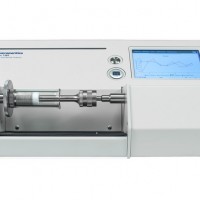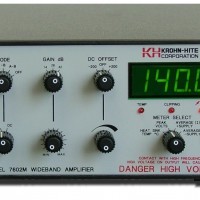Gammex 610新生儿胸部模体,Gammex 610胸部模体详细介绍:
Gammex 610新生儿胸部模体,Gammex 610胸部模体
质量控制数字X射线和CT
Gammex 610新生儿胸部模体是专为计算机和数字X线摄影系统的日常质量保证监测而设计的。由于模体复制了真实新生儿的解剖结构和组织衰减特征,因此可以使用临床协议对模体进行成像,从而对整个成像链进行测试,包括图像处理参数。
Gammex 610新生儿胸部模体是第一个在其传播特性,直方图,物理尺寸和结构上足以代表1-2公斤新生儿的拟人新生儿模体。因此,可以使用适当的临床参数对其进行成像以提供图像一致性随时间的测量。
Gammex 610新生儿胸部模体还包含临床相关的图像质量挑战的解决方案和模拟肺气胸胸膜增厚的肺形式的噪声和模拟肺透明膜病肺。
Gammex 610新生儿胸部模体满足了国际和国家标准组织(如IPEM和AAPM)对计算机和数字X线摄影的全面质量保证计划的认可,解决了患者暴露和图像质量的两个主要问题。患者的照射是一个问题,因为计算机和数字化射线照相设备将过度曝光的图像缩放到合适的光密度。通常被称为“剂量蠕变”的结果在儿科成像中特别相关,其中一些患者每天被多次射线照相。
图像质量的评估由于计算机和数字射线照相系统使用被射线照相的解剖学的先验知识来处理和显示图像的方式而变得复杂。图像质量可能因参数选择不当而降低。参数选择对图像质量的影响只能通过使用复制人体解剖结构的模型来评估。
Gammex 610新生儿胸部模体特别适合作为确保尽可能低的曝光水平的工具,仍然保持诊断图像质量。
新生儿胸部模体Gammex 610
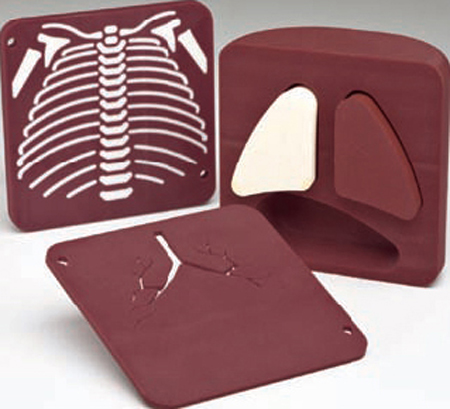
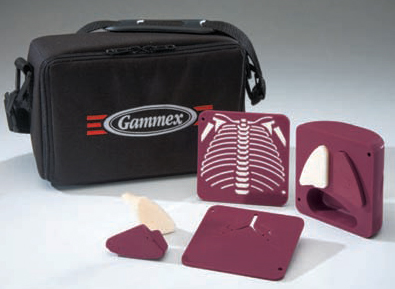
| Gammex 610新生儿胸部模体,Gammex 610胸部模体技术规格: | |
| 尺寸: | 约。100x100x54毫米 |
| 重量: | 约。500克 |
| 组成: | (组织等效材料) 空气,肌肉,正常肺, 透明膜肺,骨 |
| 包括的肺: | #1 - 透明膜病:气胸 #2 - 透明膜病:无气胸 #3 - 正常质地:气血 #4 - 正常质地:无气胸 |
Neonatal Chest Phantom Gammex 610
Quality Control for Digital X-Ray & CT
Neonatal Chest Phantom GAMMEX 610
The Gammex 610 Neonatal Chest Phantom is designed for routine quality assurance monitoring of computed and digital radiography systems. Because the phantom replicates both the anatomic structure and the tissue attenuation characteristics of a real neonate, the phantom can be imaged using clinical protocols resulting in a test of the entire imaging chain, including image processing parameters.
The Gammex 610 is the first anthropomorphic neonatal phantom that sufficiently represents a 1-2 kg neonate in its transmission characteristics, histogram, physical size and structure. As such, it can be imaged using the appropriate clinical parameters to provide a measure of image consistency over time.
The phantom also contains clinically relevant image quality challenges for resolution and noise in the form of a lung with simulated pneumothorax with pleural thickening, and a lung with simulated hyaline membrane disease.
The Gammex 610 Neonatal Chest Phantom answers a recognized need by both international and national standards groups such as IPEM and AAPM for a comprehensive quality assurance program for computed and digital radiography addressing the two major concerns of patient exposure and image quality. Patient exposure is a concern because computed and digital radiographic equipment will scale the over exposed images to the proper optical density. The result, often referred to as "Dose Creep" is especially relevant in pediatric imaging where some patients are radiographed several times per day.
evaluation of image quality is complicated by the way in which computed and digital radiographic systems use a-priori knowledge of anatomy being radiographed to process and display the image. Image quality can be degraded through improper parameter selection. The effect of parameter selection on image quality can only be assessed by using a phantom that replicates the human anatomy.
The Gammex 610 phantom is specially suited as a tool for establishing the lowest possible exposure level that still maintains diagnostic image quality.

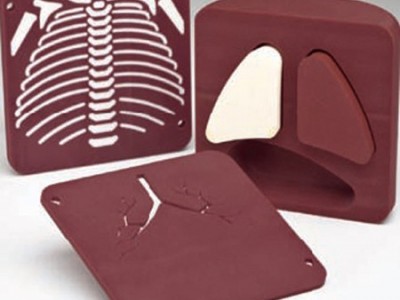
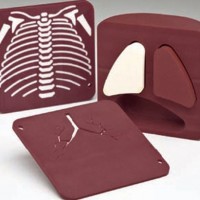

 [VIP第3年] 指数:1
[VIP第3年] 指数:1










